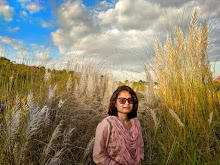Makeup Base - Concealer
How to Pick the Right Shade of Concealer
Choosing the right shade of concealer can be daunting. Do you go lighter or darker? What about those undereye circles or rosacea on the cheeks. Here, we show you how to pick the right shades of concealer for your skin tone.
When choosing a concealer, you should consider both consistency and color. If you are covering major undereye circles, you're going to want a concealer that provides major coverage. The editors of Allure's "Confessions of a Beauty Editor" suggest testing consistency by dabbing concealer on the blue veins on the inside of your wrist.
Yellow-toned products are your best bet for covering up undereye circles, according to makeup artist Bobbie Brown. Orange-based tones blend best into dark or black skin. You want a shade or two lighter than your foundation (remember, your foundation should match your skin almost exactly). In the March, 2007 issue of InStyle Magazine, Brown suggests avoiding "greasy or chalky formulas that are too pink or white."
Test color on the area of your neck below your ear. Again, the color should be a slight lighter than your foundation. If you go too light, you risk looking like a raccoon. Just like you will foundation, you may need a lighter concealer shade in winter than you would in summer.
Concealer is a definite "try before you buy" product. I don't recommend purchasing any product that's non-returnable. Instead, try out different concealers at department store counters or Sephora.
How to Properly Apply Concealer
Concealer is the one staple in a woman's beauty arsenal that can dramatically change your appearance. Used correctly, concealer can brighten a tired face, it can cover up blemishes and it can totally conceal under-eye circles. In fact, many beauty editors useconcealer primarily and skip foundation completely.
I find many of my friends are afraid of concealers because they don't know how to find the right shade or apply it properly. It can be daunting, but once you know the basics and try the application process below, you'll find concealer may be your best beauty purchase to date.
See some top 10 concealers.
Pick the Right Concealer
There are so many types of concealers on the market, choosing one can be daunting. Keep in mind concealer is not a beauty product to scrimp on.
A basic rule of thumb is to choose a concealer that's yellow-based and a shade or 2 lighter than your skin tone. Don't go too light or you could end up with the dreaded raccoon look. If your skin is darker in summer, you should choose a darker shade for summer months and a lighter one for other months. To test shades, try them out at department store beauty counters or Sephora. Just don't get suckered into a full-makeover at the cosmetics counter.
Should You Apply Concealer Before or After Foundation?
How to Apply Concealer
To properly apply concealer, follow these directions:
- Apply several dots of concealer under the eyes close to the lashes. Apply a dot to the inside corners of the eyes. You can use your finger or, for best results, try a small-headed brush with firm bristles.
- Using the pad of your middle finger, tap in the concealer (always tap, never rub). Make sure to blend well. You can also use your index finger. There's no real rule to it, but I find the middle finger tends to be more gentle.
- Apply concealer on other uneven spots on the face -- including the chin, and around the nose and mouth if need be -- and tap in.
- Apply another layer if you need more coverage.
- Dust fine, loose powder over your face to set your concealer. According to makeup artist Scott Barnes in Allure Magazine, loose powder applied with a fluffy brush is "the secret to good concealer."
How to Disguise Dark Under-eye Circles
It's best not to use your basic concealer to try to disguise dark under-eye circles. Instead, choose an "under-eye concealer" specially formulated to cover up dark spots. These work by brightening the dark areas under the eyes and are not to be used to camouflage redness or blemishes.
How to Cover Up a Pimple
Use a stiff brush with a pointy, fine tip to dab on a concealer that matches your skin tone. It's important to apply only to the red areas, not necessarily to the raised area. Let the concealer dry. Apply a second layer. Set the concealer with a dusting of translucent powder. If you find you overdid the concealer, use a tissue to gently buff the concealer away. If that doesn't work, moisten a Q-tip with makeup remover and gently apply to the pimple. Then re-cover the pimple with concealer.
How to Disguise Pockmarks and Deep Scars
You can disguise a concave pockmark or scar by using an angled brush dipped in a concealer that's a shade lighter than your skin tone. Fill in the center of the pockmark without going over the edges and then dust skin with translucent powder. If the scar is raised, use a concealer that matches your skin tone and pat the scar with the concealer, setting the concealer with powder.
Does Concealer Work on Under-Eye Bags?
Concealer is actually not a good bet for downplaying under eye bags. Instead, makeup artist Dick Page recommends pearl highlighter, which acts as an optical illusion, making you look more awake. Page dots the highlighter on the inner corner of eyes, under the lower lids and on the outer corner of the brow.
Read more about beauty on About.com




















No comments: